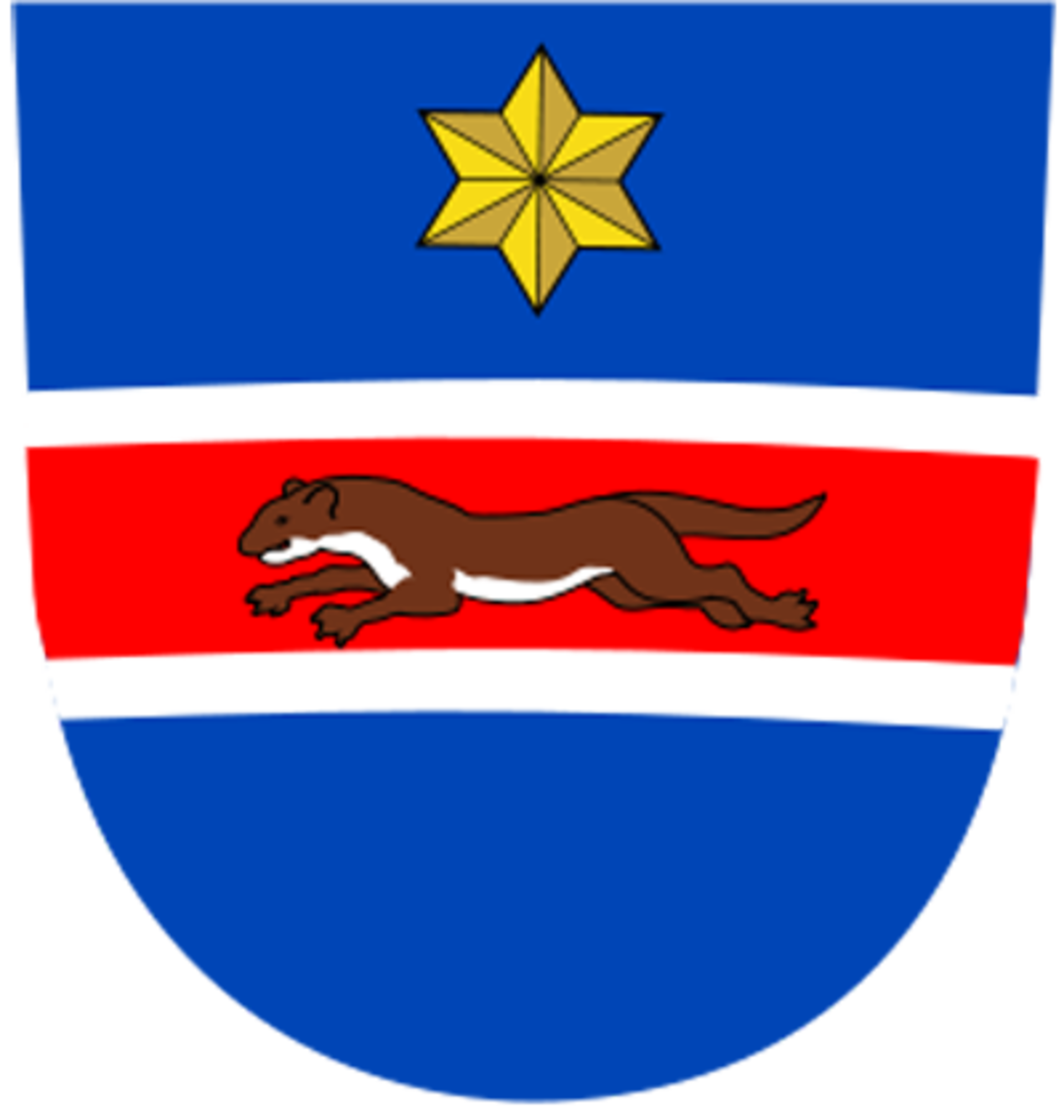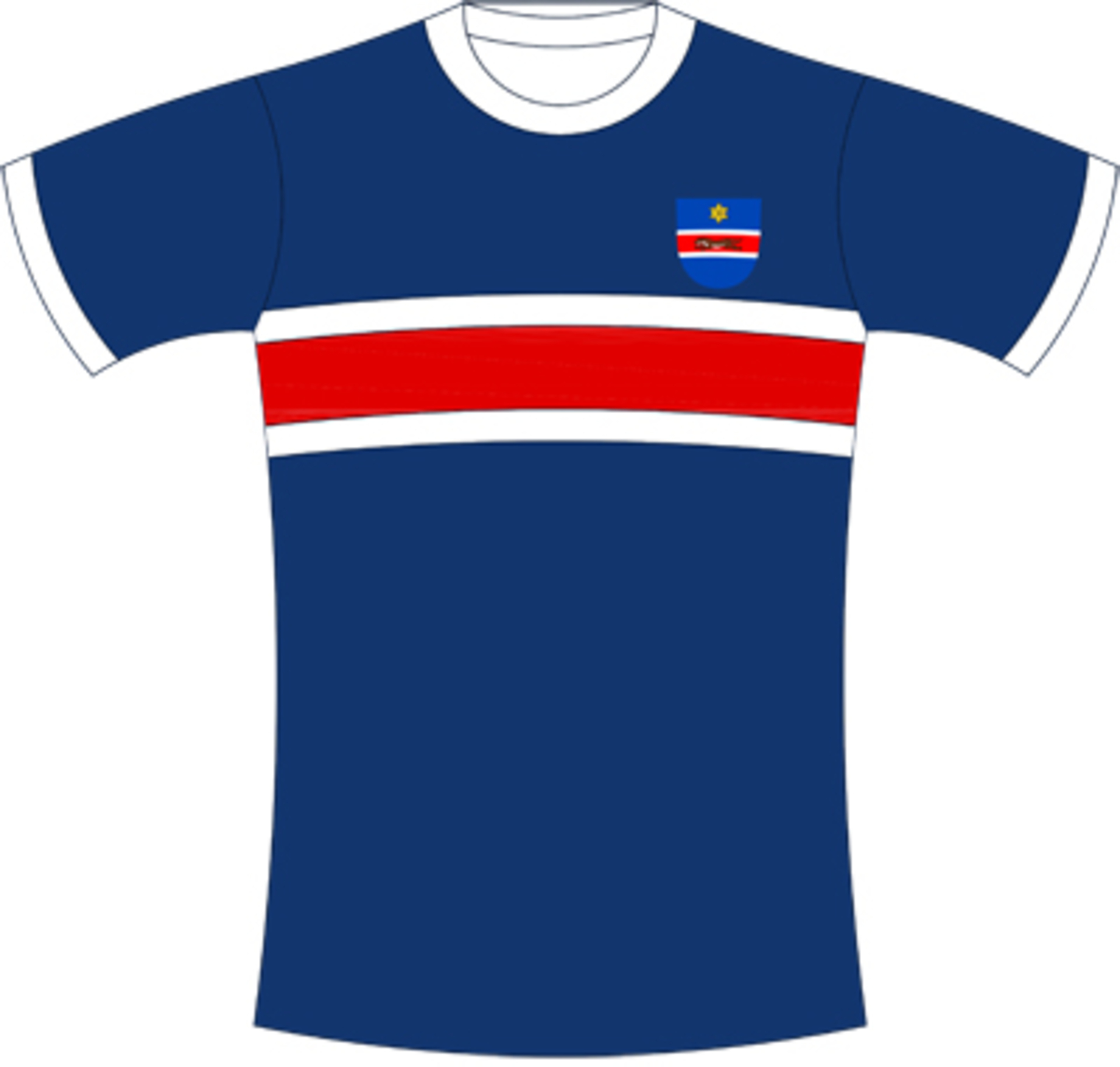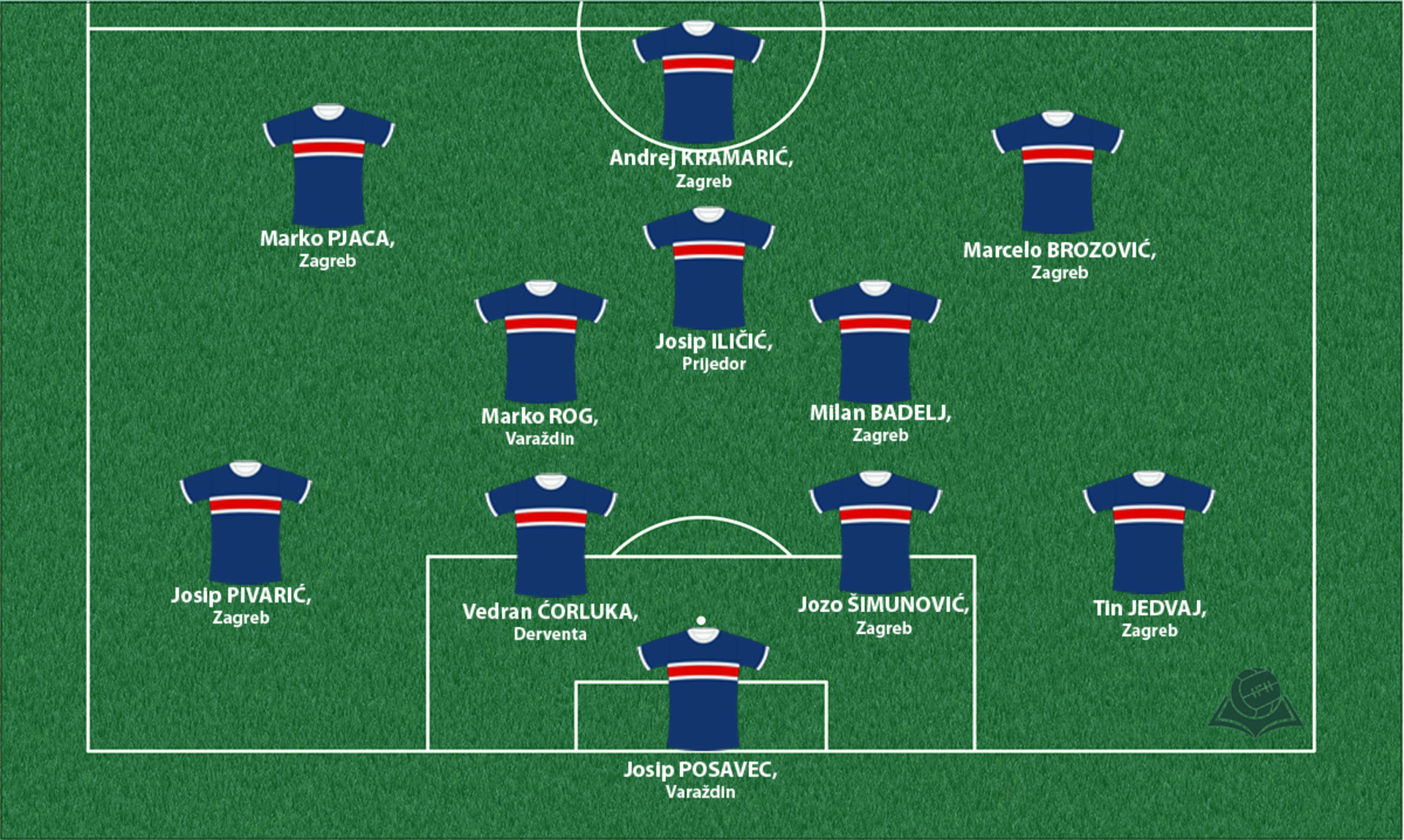The Kingdom of Slavonia
The Kingdom of Slavonia (Regnum Sclauoniae) was not a kingdom in the usual meaning of that word, but an area which possessed a certain degree of autonomy within the Lands of the Hungarian Crown. In the period between the 13th and the 16th century its territory almost overlapped with that of the Diocese of Zagreb.

Coat of arms

Shirt
| Position | First name | Last name | Mjesto rođenja | Like | Dislike | |
|---|---|---|---|---|---|---|
| GK | Adrian | ŠEMPER | Zagreb |
3 |
0 |
|
| GK | Josip | POSAVEC | Varaždin |
20 |
6 |
|
| DC | Jozo | ŠIMUNOVIĆ | Zagreb |
3 |
1 |
|
| DC | Mario | MALOČA | Zagreb |
1 |
3 |
|
| DC | Vedran | ĆORLUKA | Derventa |
40 |
5 |
|
| DRC | Tin | JEDVAJ | Zagreb |
29 |
7 |
|
| DR/MRC | Fran | KARAČIĆ | Zagreb |
1 |
1 |
|
| DR/AMR | Ivan | TOMEČAK | Zagreb |
1 |
1 |
|
| DL | Borna | SOSA | Zagreb |
4 |
1 |
|
| DL | Josip | PIVARIĆ | Zagreb |
7 |
5 |
|
| DC/DMC | Filip | BENKOVIĆ | Zagreb |
5 |
0 |
|
| DMC | Kristijan | BISTROVIĆ | Koprivnica |
2 |
0 |
|
| DMC | Milan | BADELJ | Zagreb |
45 |
6 |
|
| MC | Domagoj | ANTOLIĆ | Zagreb |
3 |
1 |
|
| MC | Filip | KROVINOVIĆ | Zagreb |
4 |
1 |
|
| MC | Toma | BAŠIĆ | Zagreb |
1 |
0 |
|
| MRLC | Marcelo | BROZOVIĆ | Zagreb |
45 |
5 |
|
| AMC | Ante | ĆORIĆ | Zagreb |
2 |
1 |
|
| AMC | Lovro | MAJER | Zagreb |
2 |
0 |
|
| AMC | Luka | IVANUŠEC | Varaždin |
2 |
0 |
|
| AMC | Marko | MARIN | Bosanska Gradiška |
0 |
2 |
|
| AMC | Niko | KRANJČAR | Zagreb |
4 |
1 |
|
| AMC/SS | Josip | ILIČIĆ | Prijedor |
11 |
6 |
|
| AMRLC | Filip | OZOBIĆ | Bjelovar |
1 |
1 |
|
| AMRLC | Marko | ROG | Varaždin |
18 |
2 |
|
| AMRL/DR | Fran | TUDOR | Zagreb |
3 |
1 |
|
| AMRL | Josip | BREKALO | Zagreb |
3 |
0 |
|
| AMR/DR | Mario | ŠITUM | Zagreb |
1 |
0 |
|
| AML/DL | Petar | BOČKAJ | Zagreb |
5 |
1 |
|
| FRLC | Marko | PJACA | Zagreb |
18 |
0 |
|
| FC | Leon | BENKO | Varaždin |
2 |
0 |
|
| FC | Sandro | KULENOVIĆ | Zagreb |
2 |
0 |
|
| FC/SS | Andrej | KRAMARIĆ | Zagreb |
44 |
3 |
(Today part of: northwestern Croatia, northwestern BiH)
Between the 11th century to the first half of the 16th century, the Kingdom of Slavonia possessed a certain degree of autonomy within the Kingdom of Hungary, which was instituted in the existence of their own parliament, coat of arms, right to mint their own currency (the Kuna), the person of the representative of royal power – the Herceg, i.e. the heir to the throne, and the Ban (governor) of Slavonia, whose office was bestowed on the noblemen loyal to the king.
Its territorial range almost completely overlapped with that of the Diocese of Zagreb, which was founded back in the 11th century by the Hungarian king, and it more or less encompassed the area between the rivers Sava and Drava in the north and south, the river Sutla in the west, and the hills of Požega in the east.In the 15th century, Slavonia also encompassed areas south of the Sava, more precisely the counties around the lower Una River, as well as rivers Vrbas and Sana. During particular historical circumstances (reconstitution of the state, external threats…), there would be one Ban for Slavonia, Dalmatia, and Croatia, the latter spreading over the Dinara mountain area in the hinterlands of Dalmatian coastal cities, throughout the whole of the Middle Ages.
The difference between Slavonia, the Dalmatian communes, and cities of Croatia – those which were in the hands of the nobility – was a great one; in that the Hungarian kings were those who could bestow them withthe status of a free royal city making them, among other things, directly subservient to the king, and not the nobility. As it represented the border area of the Kingdom of Hungary, which would be first to feel the blow of the Muslim Ottoman conquest, Slavonia and its neighbouring Croatia would, at the end of the 15th century, and later even more often, be labelled as the “Bulwark of Christendom” (Antemurale Christiantatis); the term which had also been used for numerous countries, since the 12th century.
The Ottoman conquests, however, influenced the change in the meaning of the term “Slavonia,” which would, in the Modern Era, be used for the area of the counties east of the hills of Požega, while the area of the medieval Slavonia will take on the name of Croatia.
Sources
- Tomislav BALI, Prostor i pojam Slavonije u XIII. Stoljeću. Diplomski rad, Zagreb: Filozofski fakultet, 2010.,
- Tomislav BALI, Slavonski meandar - Prostor i pojam Slavonije u XIII. Stoljeću, Zagreb: Srednja Europa, 2014.,
- Ladislav HEKA, ''Hrvatsko-ugarski odnosi od srednjeg vijeka do Nagodbe iz 1868. s posebnim osvrtom na pitanje Slavonije'', Scrinia Slavonica, 8/2008, br.1, 155.
- Ivo ŽANIĆ, ''Simbolični identitet Hrvatske u trokutu ''raskrižje- predziđe – most'', Historijski mitovi na Balkanu (ur. Husnija Kamberović ), 2003, Sarajevo,
- ''Bela IV.'' , http://www.enciklopedija.hr/Natuknica.aspx?ID=6677
- Stanko ANDRIĆ, ''Slavonija', http://hipsb.hr/slavonija/
- Coat of amrs: https://commons.wikimedia.org/wiki/File:Coat_of_arms_of_Slavonia.svg
